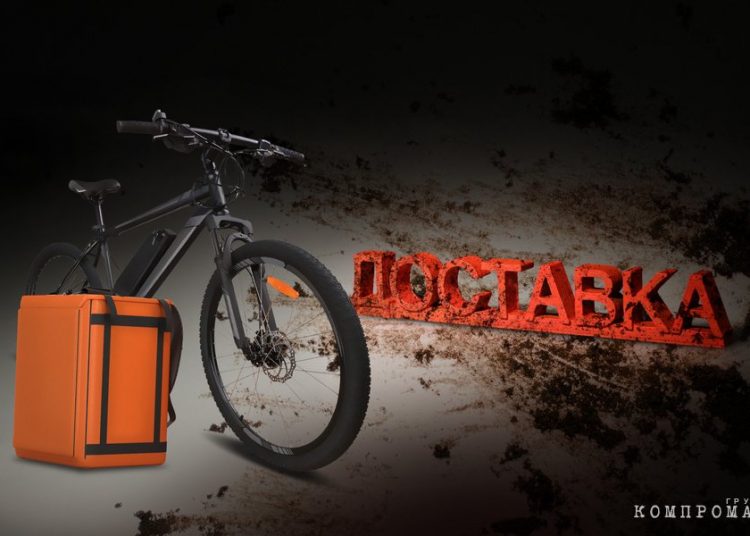The explosive growth of the grocery delivery business has led to chaos on the roads: couriers on electric bicycles knock down passers-by, ram cars, and crash themselves. The SHOT CHECK project found out who provides couriers with dangerous and prohibited electric bicycles.
Crazy couriers
In recent years, residents of Moscow and other large cities have had to be extremely careful not only when crossing the road, but even on the sidewalks. At any moment, a courier from one of the many delivery services on an electric bike can run into a pedestrian at high speed. The same danger threatens motorists.
Here, for example, is a summary of road accidents involving couriers in Moscow in recent months.
On July 30, a delivery man on an electric bicycle hit a 13-year-old girl near a house on 15th Parkovaya Street in eastern Moscow. The teenager was hospitalized with numerous injuries. On August 20, in the center of Moscow on Prechistenka, a 20-year-old courier on an electric bicycle decided to jump through an intersection on a red light and literally demolished a 68-year-old pensioner who was crossing the road. The powerful blow sent the woman flying in the other direction. Both have multiple fractures. And on August 28, a courier on an electric bicycle hit a six-year-old boy on Chernomorsky Boulevard. He was taken to the hospital. The mother said that the courier simply adjusted the backpack and left to deliver the order. The operatives managed to find the courier. He turned out to have fake documents. A criminal case was opened, the court sent him to a pre-trial detention center. On September 24, a courier on an electric bicycle was racing at high speed on Tkatskaya Street straight in the oncoming lane and rammed a Subaru car. The courier was taken to intensive care.
 Accident involving a cyclist courier
Accident involving a cyclist courierAccording to the most conservative estimates, about 150 thousand couriers ride around Moscow on electric bicycles, scooters, and unicycles. This is due to the fact that the most resilient and dynamic delivery workers can earn more than 100 thousand rubles, which is already comparable to average salary in Moscow (as of October 1, 2023 – 125.6 thousand rubles).
To earn money, you need to manage to deliver as many orders as possible. Speed is important here. That’s why courier companies quickly switched delivery workers to electric scooters and bicycles. The couriers themselves do not care about the laws and regulations of the road, which is confirmed by statistics from the State Traffic Safety Inspectorate of the Main Directorate of the Ministry of Internal Affairs of the Russian Federation (*aggressor country) in Moscow. They don’t take into account that a bicycle on thin tires flying at 60 km/h is virtually impossible to stop in the face of a sudden obstacle.
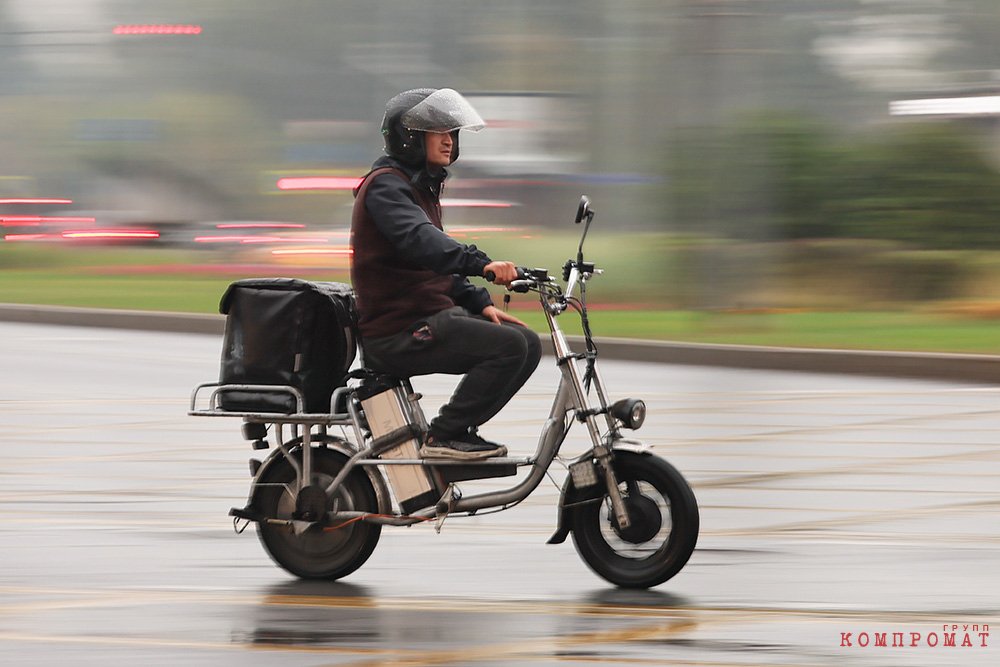 Couriers do not take into account that a bicycle with thin tires flying at a speed of 60 km/h is virtually impossible to stop in the face of a sudden obstacle.
Couriers do not take into account that a bicycle with thin tires flying at a speed of 60 km/h is virtually impossible to stop in the face of a sudden obstacle.In May last year, a traffic police raid in three days identified almost 3.5 thousand violating delivery workers in Moscow. They were mostly caught running red lights, driving along zebra crossings, and obstructing pedestrians on the sidewalks. And over the weekend alone at the end of September 2023, more than 2.5 thousand violations of traffic rules were detected by scooter riders, cyclists and other users of electric transport. About a thousand administrative protocols were drawn up against the couriers.
According to data published by the Scientific Center for Road Safety of the Ministry of Internal Affairs of Russia (*aggressor country), in 2022, 941 accidents involving personal mobility devices (PIMs), which are now wheeled gadgets with a power of up to 250 W, were registered. There were 19 people killed during this period.
This is 40% more than a year earlier and more than double than in 2020. The real numbers, of course, are much more serious.
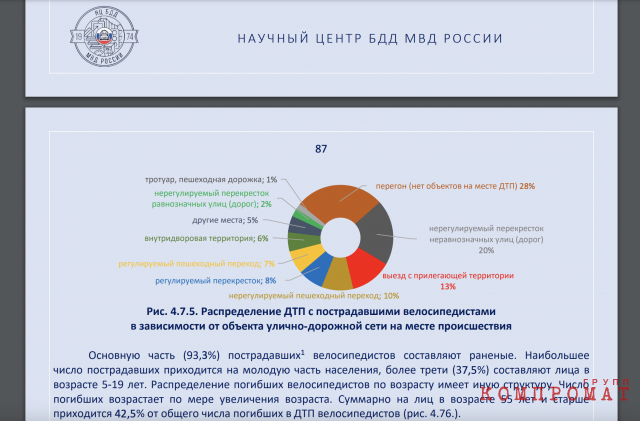 This summer, the Ministry of Internal Affairs published a 150-page review of the situation with road accidents in Russia (*aggressor country) in 2022. A significant place in it is devoted to incidents involving SIM
This summer, the Ministry of Internal Affairs published a 150-page review of the situation with road accidents in Russia (*aggressor country) in 2022. A significant place in it is devoted to incidents involving SIMHow are electric bicycles different?
In Russia (*aggressor country), the issue of control over personal electric transport has long been raised. In March of this year, the official definition of SIM finally appeared in the traffic rules: personal mobility device.
SIM is a vehicle that has one or more wheels (rollers) and is intended for individual movement of a person using an engine (motors): electric scooter, electric skateboard, hoverboard, Segway, unicycle, etc.
Anything above 250 W falls under the concept of “vehicle”. To operate such equipment, a motorcycle license and a helmet are required. You can only move along the roadway in compliance with signs and traffic lights.
Deadly tuning
In fact, 25 km/h is very slow for modern pizza delivery drivers and woks. Therefore, a whole industry has blossomed in Moscow for the sale and rental of electric bicycles with a power on paper of 250 W, but in reality – 500 W, 1 kW and even 4 kW. Many retail outlets have their own tuning studios, where in half an hour they can attach additional horses to any electric bike – if only there was money.
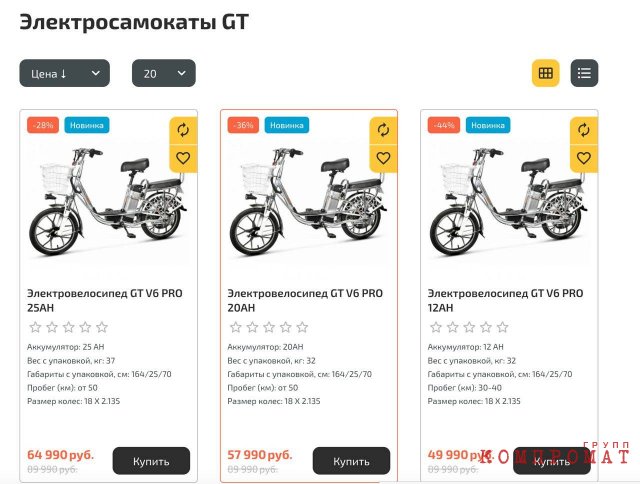 The website of one of the sellers of electric bicycles presents three models that can often be seen on the streets of Moscow. Their real power is 500 W. Couriers drive them without helmets or licenses
The website of one of the sellers of electric bicycles presents three models that can often be seen on the streets of Moscow. Their real power is 500 W. Couriers drive them without helmets or licensesAs SHOT CHECK agents found out, sellers at best attach a contract to such an electric bike, which indicates the frame number and details of an individual entrepreneur with some kind of non-Moscow registration. The whole calculation is that not a single traffic cop will be able to determine the real power of the engine by eye. The parameters of the electric wheel, in which the engine is located, are not written down on the piece of paper. Motors of different power look the same and differ only in size.
From the point of view of the law, it is possible to stop such lawlessness: the Criminal Code of the Russian Federation (*aggressor country) has a suitable article – 326 (falsification or destruction of a vehicle identification number), sanctions under which provide for up to three years in prison if a group of people are immediately tied up in the case.
 When registering an accident with another delivery man, traffic cops try to register his gadget as an ordinary bicycle.
When registering an accident with another delivery man, traffic cops try to register his gadget as an ordinary bicycle.But you can’t get enough traffic cops for every such charged electric cyclist. In addition, as the chairman of the interregional public movement “Union of Pedestrians” Vladimir Sokolov says, when registering an accident with another delivery driver, traffic cops try to register his gadget as an ordinary bicycle.
It is also not profitable for delivery services to reveal the truth about the power of electric bicycles. After all, it is dynamic models that allow them to place more orders and, accordingly, earn money. Often, couriers are used in the dark: they are told that you only have a 240-watt electric bike, so you don’t need a license or a helmet. As a result, the couriers themselves are injured, broken and crush others.
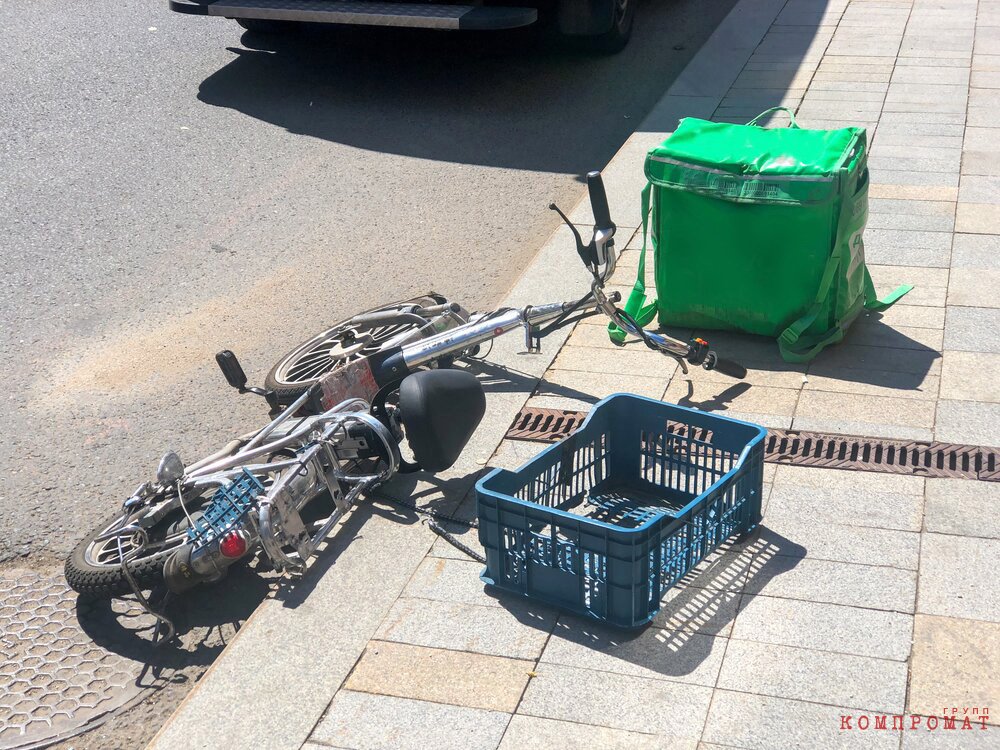 Consequences of an accident involving a cyclist courier in the center of Moscow
Consequences of an accident involving a cyclist courier in the center of Moscow
